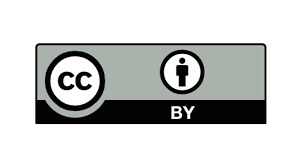Dimensiones de la tecnología en la formación inicial de profesores de matemáticas: un estudio desde el currículum oficial
Dimensiones de la tecnología en la formación inicial de profesores de matemáticas: un estudio desde el currículum oficial
Main Article Content
Implementation of technology in teaching-learning mathematics requires a change in teaching practice. This change can be promoted from the initial training of mathematics teachers. In order to achieve this further research on the different aspects affecting is necessary; one of these is the official curriculum recognized as an institutional- type variable. Therefore, a comparative study of four representative bachelor degree programs in Mexico, dedicated to the initial training of high school mathematics teachers is presented; particularly, it is identified how technology is present in the thematic programs of the subjects in the area of Educational Mathematics and in three documents serving as a reference in the design of programs directed to the initial and continuous training of High School Level mathematics teachers. The methodology adopted in this research is qualitative, considering that it is based on an interpretative analysis. For this, a content analysis was made to the official curricula of the Applied Mathematics bachelor program from the Autonomous University of Puebla; Mathematics program from the Autonomous University of Zacatecas; Teaching of Mathematics bachelor program from the Autonomous University of Baja California and the Educational Mathematics program from the Autonomous University of San Luis Potosí. This observation is complemented by the content analysis of the Comprehensive Reform of High School Education and Tuning for Latin America. The results show that the three levels of use of technology (informatics, technical and technological-didactical) are present. However, there are levels of intentionality, which might be depending on other different variables.
Downloads
Article Details
L. English, G. Jones, D. Tirosh etal. “Future Issues and Directions in International Mathematics Education Research” en Handbook of International research in mathematics education, L. English, Editor. London: Lawrence Erlbaum Ass, 2002, pp. 787-812.
A.J. Bishop, M.A.K. Clements, C. Keitel-Kreidt et al. Second International handbook of mathematics education. Dordrecht: Kluwer A.P. 2003.
S. Ursini, Ursini, Sonia1; G. Sánchez, M. Orendain et al., “El uso de la tecnología en el aula de matemáticas: diferencias v de género desde la perspectiva de los docentes”, Enseñanza de las ciencias, vol. 22, no. 3, pp. 409-424, 2004.
J. Pabón-Gómez, “Las Tics y la lúdica como herramientas facilitadoras en el aprendizaje de la matemática”, Revista Ecomatemático, vol. 5, no. 1, pp. 37-48,2014.
J. L. Lupiañez and L. E. Moreno, “Tecnología y Representaciones Semióticas en el Aprendizaje de las Matemáticas”, en Iniciación a la investigación en didáctica de la matemática. Homenaje al profesor Mauricio Castro, P. Gómez y L. Rico. Editores. Granada: Editorial Universidad de Granada, 2001, pp. 291-300.
E. Carranza, “Análisis de contenido matemático en soporte wiki”, Ecomatemático, vol. 3, no. 1, pp. 30-35,2012.
M. Artigue, “Instrumentation issues and the integration of computer technologies into secondary mathematics teaching”, In Proceeding of the Annual Meeting of GDM, pp 7-17, 2000.
M. Artigue, “Problemas y Desafíos en Educación Matemática: ¿Qué nos ofrece hoy la Didáctica de la Matemática para afrontarlos?”, Educación Matemática, vol. 16, no. 003, pp. 5-28, 2004.
F. Hitt, “¿Qué tecnología utilizar en el aula de matemáticas y por qué?”, Revista Electrónica AMIUTEM, vol. 1, no. 1, pp. 1-18, 2013
J. D. Godino, “Presente y Futuro de la Investigación en Didáctica de las Matemáticas”, en 29ª Reunión Anual de la Associação Nacional de Pós-Graduação e Pesquisa em Educação, 2006.
P. Beneitone, C. Esquetine, J. Gonzalaez et al. “Reflexiones y perspectivas de la Educación Superior en América Latina. Informe Final –Proyecto Tuning- América Latina 2004-2007”,2006. [Online]. Available http://tuning.unideusto.org/tuningal/
J. L Blancas y D.P. Rodríguez, “Concepciones sobre los usos de la tecnología en la enseñanza de las ciencias. Un análisis comparativo entre maestras y maestros de secundaria”, 2013.
C. Alsina, “Mañana será otro día: un reto matemático llamado futuro”, en El currículum de matemáticas en los inicios del siglo XXI, J.M Goñi, Coordinadores. España: Graó, de IRIF, S.L, 2000, pp. 13-21
T. Rojano, “Incorporación de entornos tecnológicos de aprendizaje a la cultura escolar: proyecto de innovación educativa en matemáticas y ciencias en escuelas secundarias públicas de México”, Revista iberoamericana de Educación, 2003.
M. Miranda and A. Sacristán, “Digital tecnologies in mexicán high-schools”, en Proceedings of the 34th annual meeting of the North American Chapter of the International Group for the Psychology of Mathematics Education, L. R Van Zoest, Editores. Kalamazoo, MI: Western Michigan University, 2012 pp. 1097-1102.
F. Hitt and J.C. Cortés, “Planificación de actividades en un curso sobre la adquisición de competencias en la modelización matemática y uso de calculadora con posibilidades gráficas”, Revista digital Matemática, Educación e Internet, vol. 10, no. 1, pp. 1-30, 2009. [Online]. Available http://www.cidse.itcr.ac.cr/revistamate/
R. Gamboa, “Uso de la tecnología en la enseñanza de las matemáticas”, Cuadernos de investigación y formación en educación matemática, vol. 2, no. 3,pp. 11-44, 2007.
F. Bernete, “Análisis de contenido (cuantitativo y cualitativo)” en Conocer lo social: estrategias y técnicas de construcción y análisis de datos, A. L. Marín y A. Noboa, Coordinadores. Madrid, 2013, pp. 221-262
J. Hernández, “La caracterización de los profesionales de la Matemática Educativa. Una mirada desde el reconocimiento de su campo académico”, Tesis de Doctorado, Universidad Autónoma de Guerrero, México, 2014.
P. Perrenoud, Diez nuevas competencias para enseñar. España: Graó, 2004.
M. Caruso, “Teoría y metodología en estudios comparados: la justificación de un plus valor y el abordaje de la globoesfera”, Revista Latinoamericana de Educación Comparada, vol. 2, pp. 8-9, 2011.
Catálogo de Programas de Licenciatura y Posgrado. Asociación Nacional de Universidades e Instituciones de Educación Superior, México, 2012. [Online]. Available http://www.anuies.mx/content.php?varSectionID=167
Reforma Integral de la Educación Media Superior. La Creación de un Sistema Nacional de Bachillerato en un marco de diversidad. Subsecretaría de Educación Media Superior, 2008. [Online]. Available http://es.scribd.com/doc/57597145/SNB-Marco-Divers-Id-Ad-Ene-2008-FINAL







